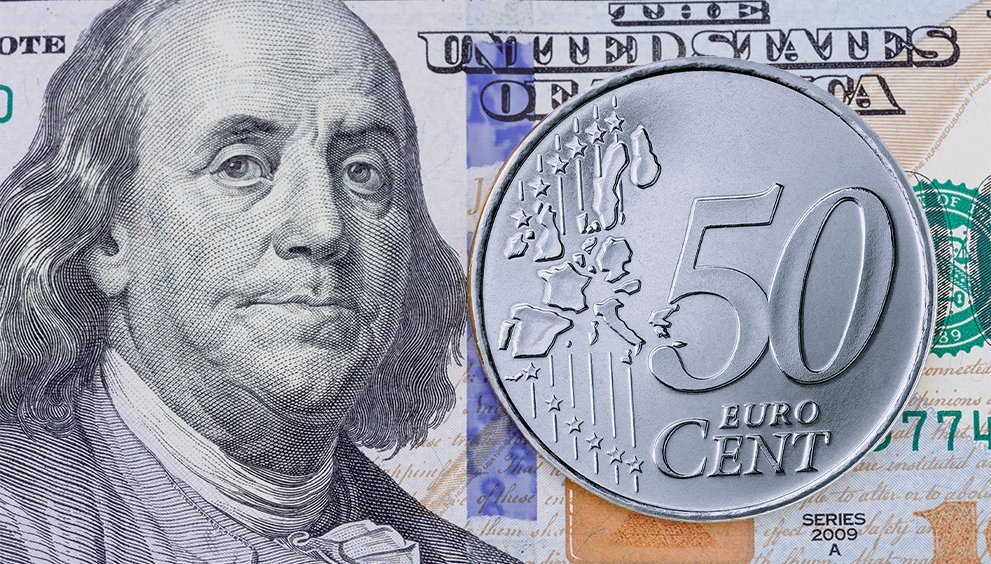EUR/USD Holds Steady Amid Fed Cut Speculation

The EUR/USD pair extended its retracement and traded around 1.1720 in Monday’s early Asian trading, after posting modest gains in the previous session. It is believed that the pair’s pullback comes as market participants weigh the shifting outlook for US monetary policy amid growing expectations that the Federal Reserve (Fed) will pivot toward rate cuts before year-end. According to the CME FedWatch Tool, markets are pricing in a 95% probability of a rate cut in October and an 84% chance of another in December. Market commentators point out that this sentiment has weakened the US dollar’s near-term momentum, limiting its upside potential despite mild safe-haven demand.
Market commentators point out that the Greenback also faces pressure from renewed fiscal uncertainty after the US Senate again failed to pass spending measures to end the ongoing government shutdown. The prolonged closure has disrupted key Fed operations and delayed critical data releases, including September’s nonfarm payrolls report, which was due last Friday. The lack of fresh labour data adds uncertainty to the Fed’s policy path, with traders turning their attention to upcoming reports such as CPI inflation and initial jobless claims for additional policy cues.
Market reports point out that on the European side, the Euro has found measured support amid cautious optimism surrounding the European Central Bank’s (ECB) policy stance. Comments from ECB policymaker Martins Kazaks, who described current rates as “very appropriate,” suggest that policymakers are comfortable maintaining restrictive settings for now. Analysts indicate that this tone may lend temporary support to the common currency, particularly if upcoming Eurozone Sentix Investor Confidence and August Retail Sales data show resilience.
Market commentators point out that the EUR/USD pair appears to be consolidating within a narrow range, with near-term support seen around 1.1700 and resistance at 1.1760–1.1780. While the Euro could regain some ground on steady ECB rhetoric, medium-term risks remain tilted toward the downside if US inflation data surprises to the upside or political gridlock worsens, undermining risk sentiment and bolstering Dollar demand.
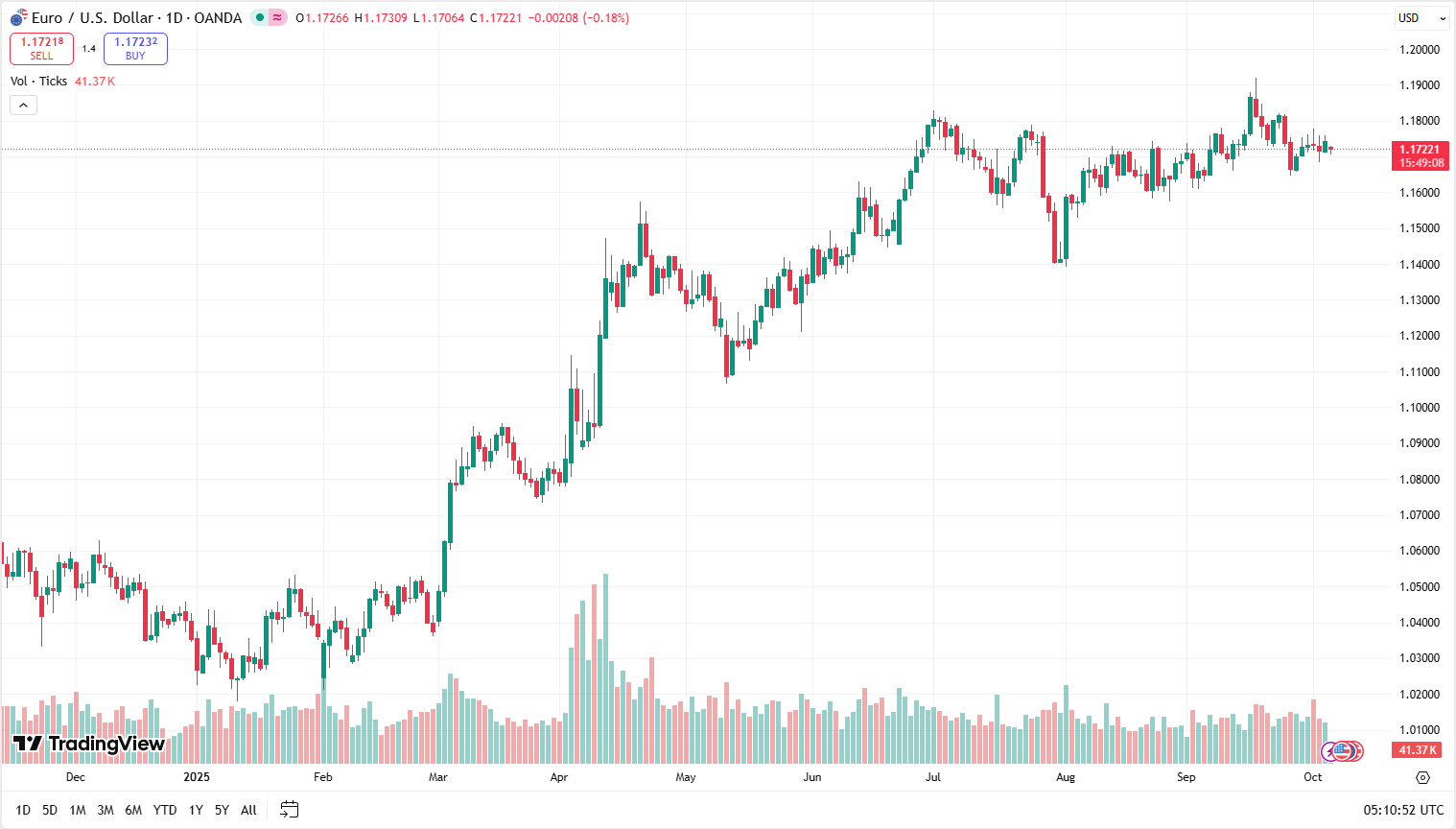
GBP/USD Struggles Amid Dollar Strength and Caution
The GBP/USD pair opened the week on a softer note, trading around 1.3400, after failing to extend Friday’s rebound. It is believed that the decline came as the US dollar found renewed strength in Monday’s early trade, supported by broad demand following Japan’s political developments. However, the pair’s downside momentum appears limited, with price action stabilizing after the initial bearish gap, suggesting cautious sentiment ahead of key economic events.
Market reports point out that market focus turned to Japan’s leadership change after Sanae Takaichi was elected head of the ruling Liberal Democratic Party. As Takaichi is considered fiscally dovish, expectations have grown that the Bank of Japan (BoJ) may postpone further rate hikes. This prospect triggered notable weakness in the Japanese yen, indirectly boosting the US dollar’s appeal across the board and weighing on the Pound-Dollar cross. Market commentators point out that gains in the Greenback remain capped by expectations that the Federal Reserve (Fed) could implement two additional rate cuts before year-end, as recent U.S. macro data highlight slowing consumer and labour-market momentum.
Analysts indicate that traders are set to monitor the scheduled US data releases such as this week’s inflation and producer price figures, alongside jobless claims, for fresh cues on the Fed’s policy path. Any signs of economic weakness or cooling price pressures could revive dovish expectations and limit the Dollar’s upside potential. Conversely, stronger-than-expected numbers might extend USD support, keeping GBP/USD under short-term pressure.
Market reports point out that on the UK side, the Bank of England’s (BoE) steady policy stance and lingering inflation concerns provide a modest cushion for the Pound. Still, with domestic growth indicators mixed and the upcoming Construction PMI in focus, traders are likely to await clarity from Governor Andrew Bailey’s speech later today. Market reports note that GBP/USD remains in a consolidation phase, with near-term support seen around the 1.3400 handle and resistance near 1.3475, as markets balance Fed easing bets against the BoE’s cautious optimism.
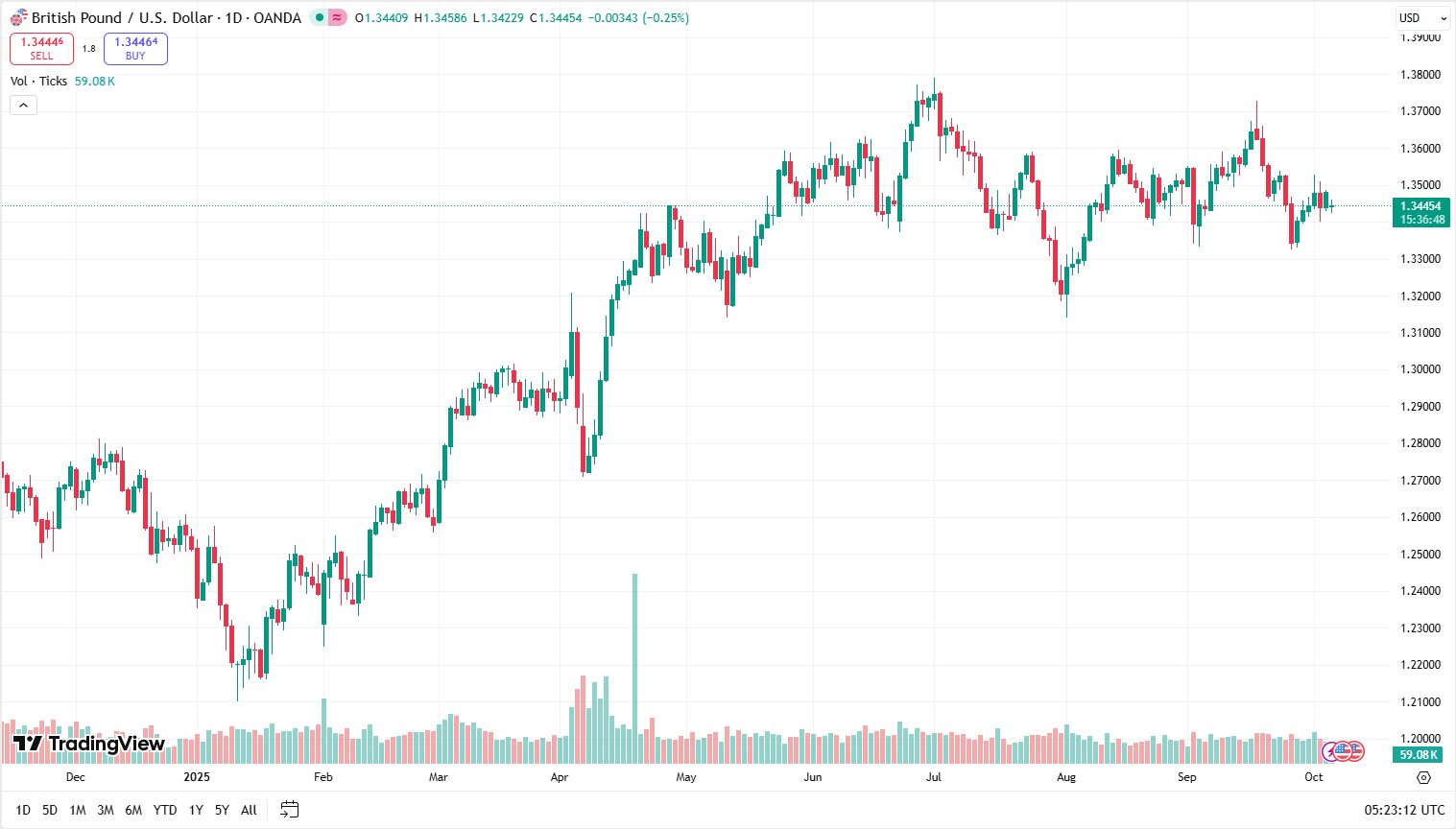
AUD/USD Extends Gains as Inflation Data Strengthens
The AUD/USD pair traded around 0.6610 in Monday’s early trading hours, extending its recovery as stronger domestic inflation data boosts investor sentiment. It is believed that the pair continues to move within a well-defined ascending channel on the daily chart, indicating a sustained bullish bias, while the 14-day Relative Strength Index (RSI) remains slightly above the neutral 50 level, reinforcing upward momentum.
Market reports point out that the the fresh TD-MI Inflation Gauge showed consumer prices rising 0.4% month-over-month in September, rebounding from a 0.3% decline in August. On an annual basis, inflation accelerated to 3.0% from 2.8%, suggesting persistent price pressures despite the Reserve Bank of Australia’s (RBA) efforts to anchor inflation within its 2–3% target range. The data strengthened expectations that the RBA may maintain its cautious tone, having kept the Official Cash Rate (OCR) unchanged at 3.6% in September while acknowledging inflation’s resilience, particularly in market services.
Market commentators indicate that technically, resistance for the pair is seen near the 12-month high of 0.6707, recorded on September 17. A decisive break above this level could pave the way toward the upper boundary of the ascending channel near 0.6780. On the downside, immediate support lies at the 0.6600 psychological level, aligned with the nine-day Exponential Moving Average (EMA) of 0.6598. A clear break below this could expose the 50-day EMA at 0.6561 and the channel’s lower boundary around 0.6550, with further losses likely shifting sentiment toward a bearish bias and opening the way to August’s low near 0.6414.
Analysts indicate that traders are set to closely monitor US inflation and labour market data later this week for fresh direction. Weak economic indicators in recent weeks, including softer consumer confidence and slowing manufacturing output, have limited US dollar strength, as markets scale back expectations for further Federal Reserve tightening. While this supports AUD/USD in the near term, medium-term risks persist, especially if China’s economic recovery falters or the RBA adopts a more dovish stance in response to global headwinds.
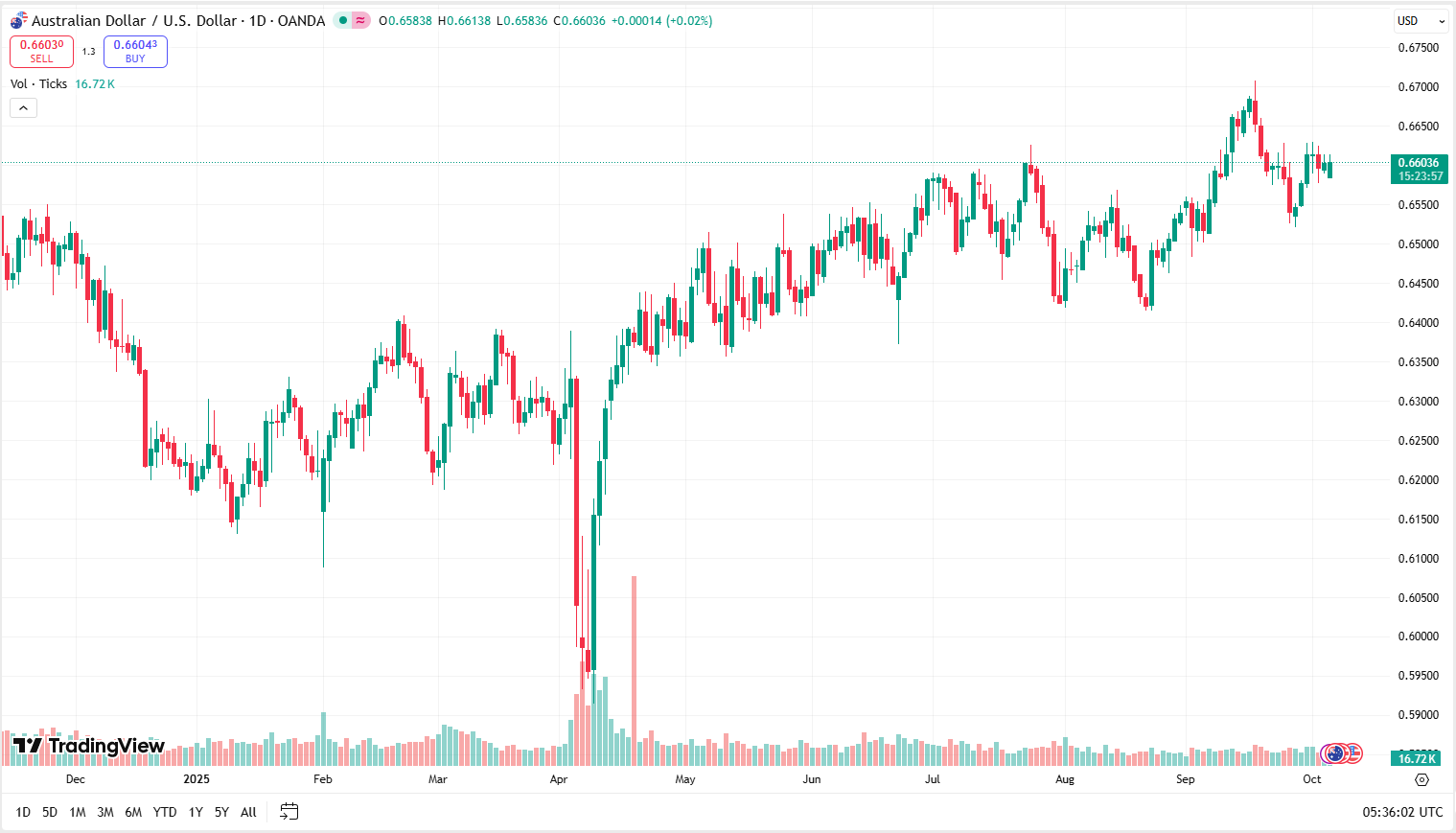
USD/CAD Slips as Oil Strengthens and Dollar Softens
The USD/CAD pair remains subdued for a second consecutive session and traded near 1.3950 in Monday’s Asian trading hours. It is believed that the pair’s weakness reflects renewed strength in the commodity-linked Canadian dollar, which benefits from a rebound in Oil prices. Market reports point out that West Texas Intermediate (WTI) crude currently trades near $61.50 per barrel after OPEC+ announced a smaller-than-expected output increase of 137,000 bpd for November, matching October’s modest rise. This limited production expansion has eased fears of oversupply, lending support to Oil and, by extension, to the Canadian dollar.
Market commentators point out that on the US side, the Greenback continues to face downside pressure amid growing expectations of monetary easing by the Federal Reserve (Fed). According to the CME FedWatch Tool, markets are pricing in a 95% probability of a Fed rate cut in October, with an additional 84% chance of another in December. The anticipation of policy easing has weakened US yields and kept the dollar on the defensive, weighing on the pair’s near-term momentum.
Analysts indicate that adding to USD vulnerability, persistent U.S. fiscal uncertainty is dampening investor sentiment. The prolonged federal government shutdown, now extending into a new week, has delayed key economic data releases, including September’s nonfarm payrolls report. Market commentators point out that the lack of fresh economic indicators limits the market’s ability to assess the US growth outlook, reinforcing a cautious stance toward the dollar ahead of upcoming inflation and retail sales data.
Market commentators point out that technically, the pair faces initial support near 1.3920, followed by 1.3880, while resistance aligns around 1.4000 and 1.4045. In the short term, firm Oil prices and dovish Fed expectations suggest mild downside pressure for the pair. However, medium-term risks remain tilted toward volatility, as any signs of US economic resilience or a shift in risk sentiment could offer the Greenback renewed support.
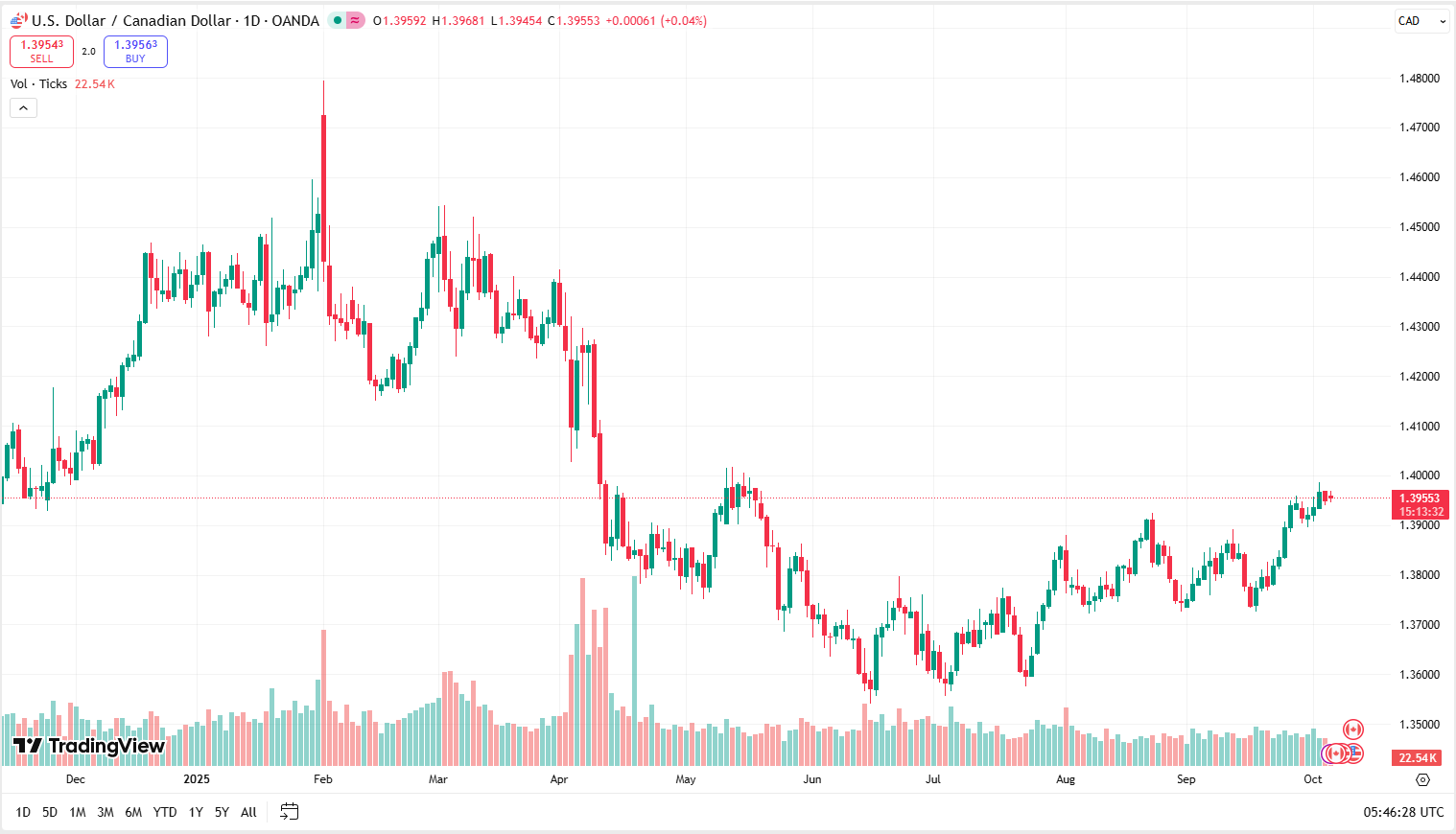
For more details about currency transfer


 English
English 


























































































